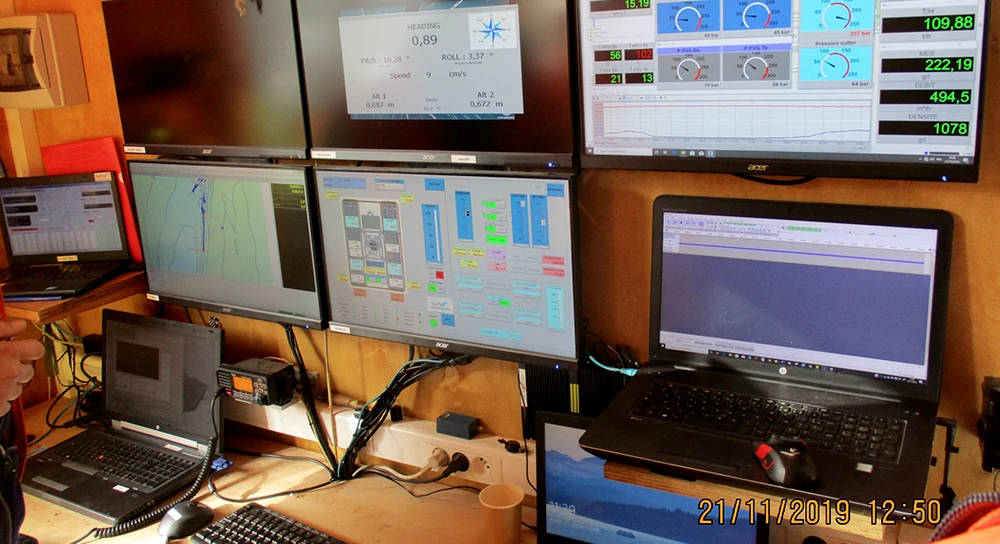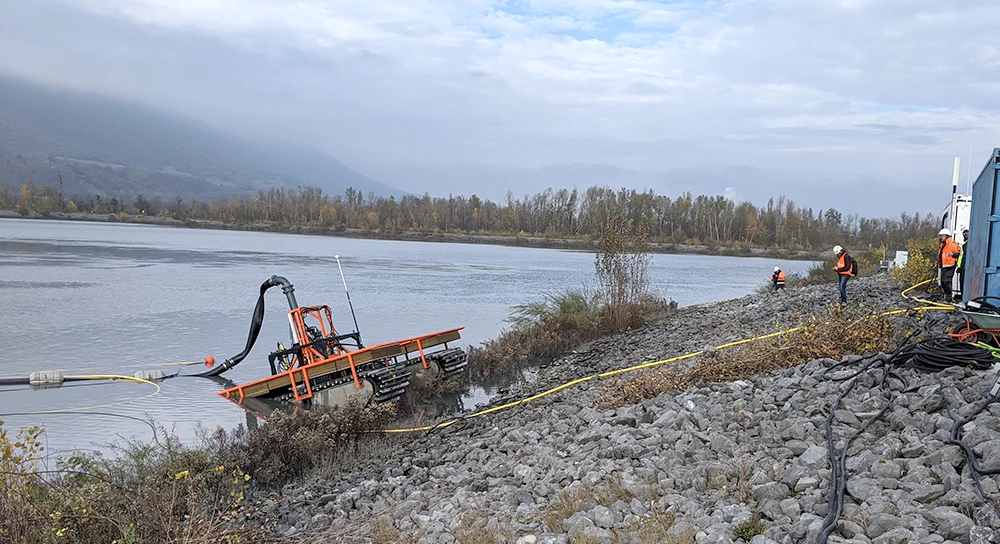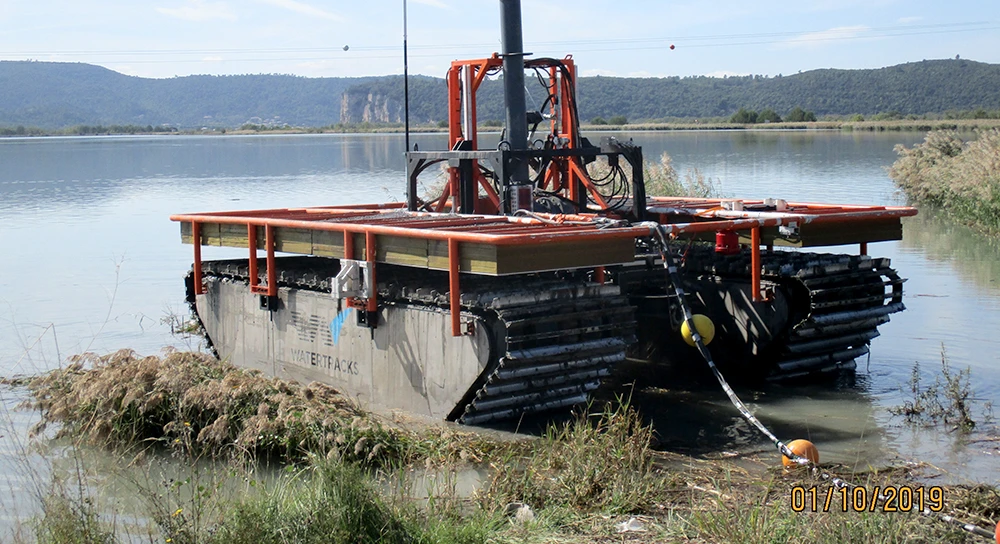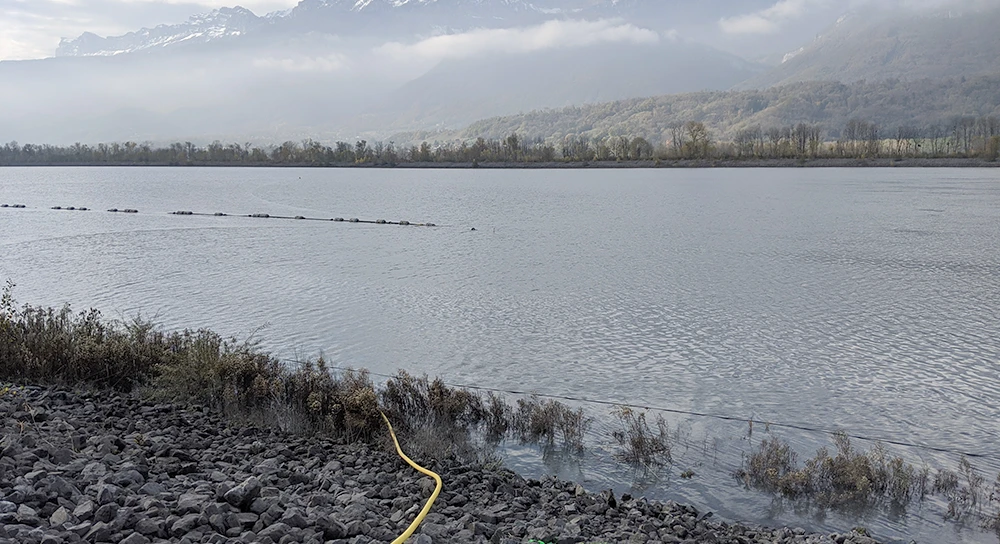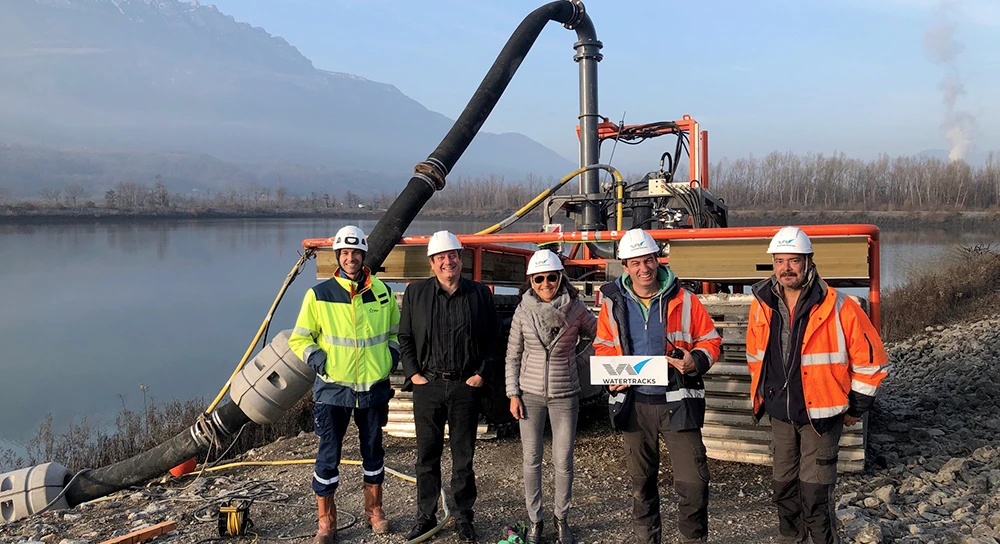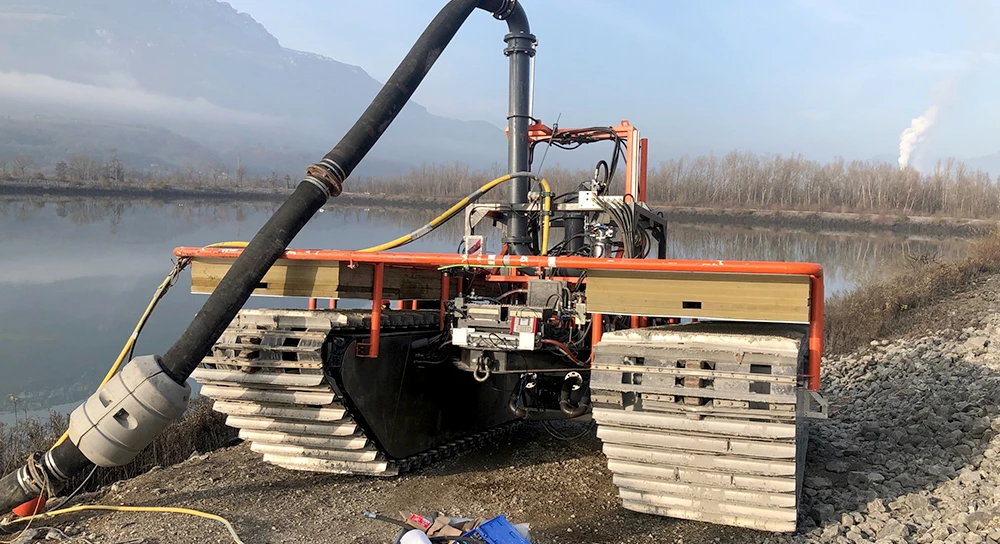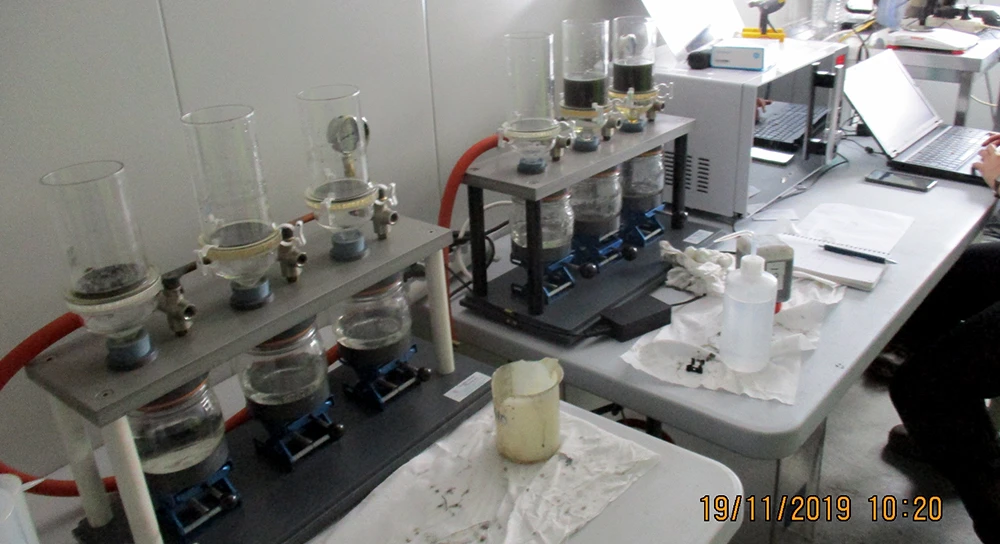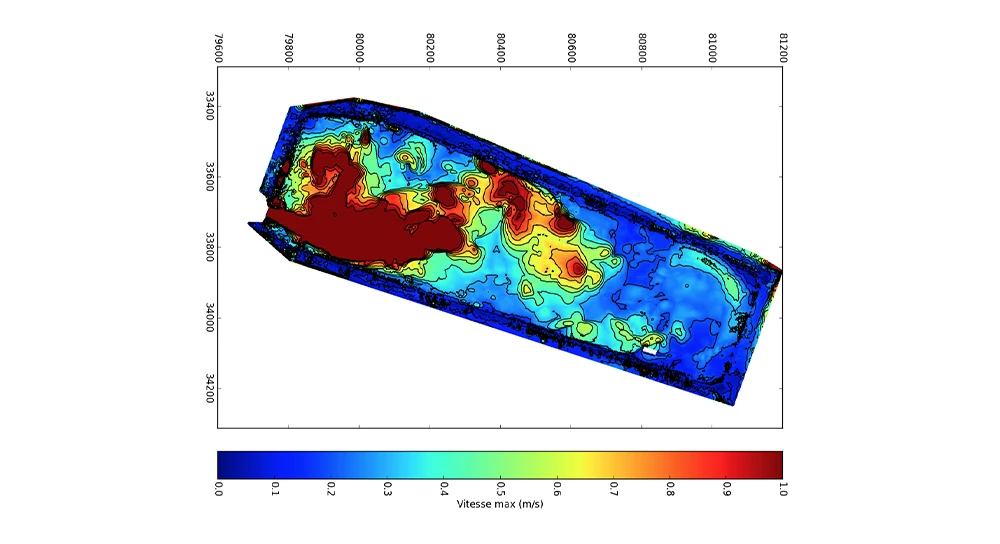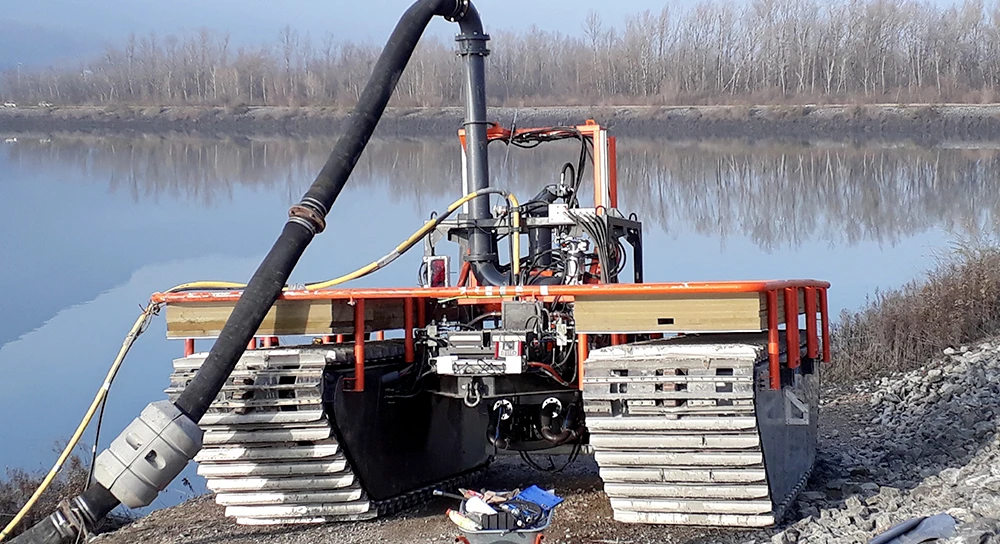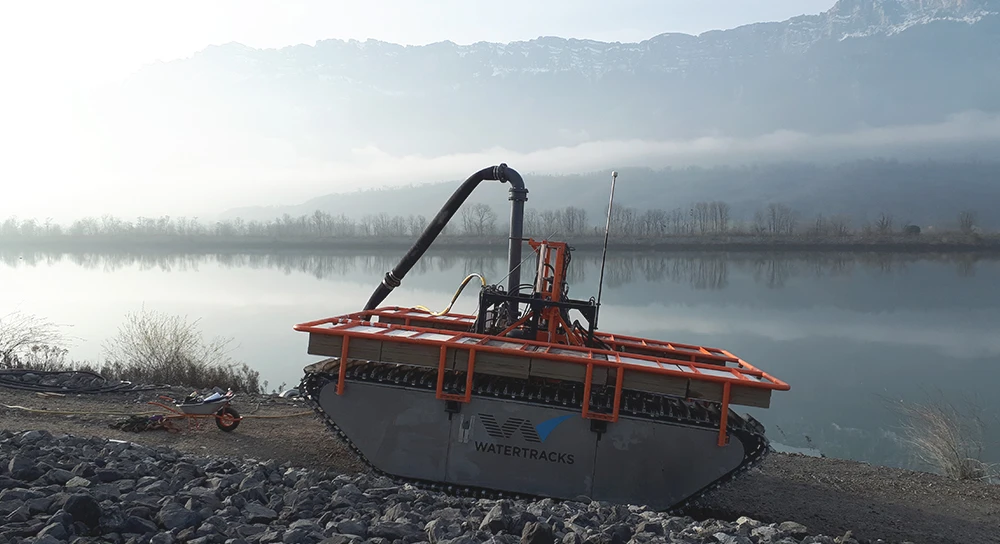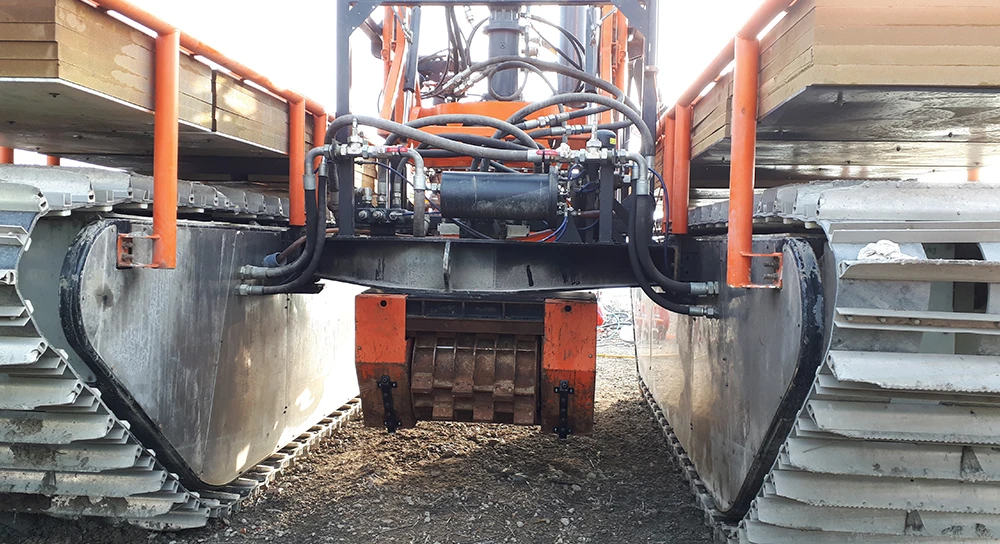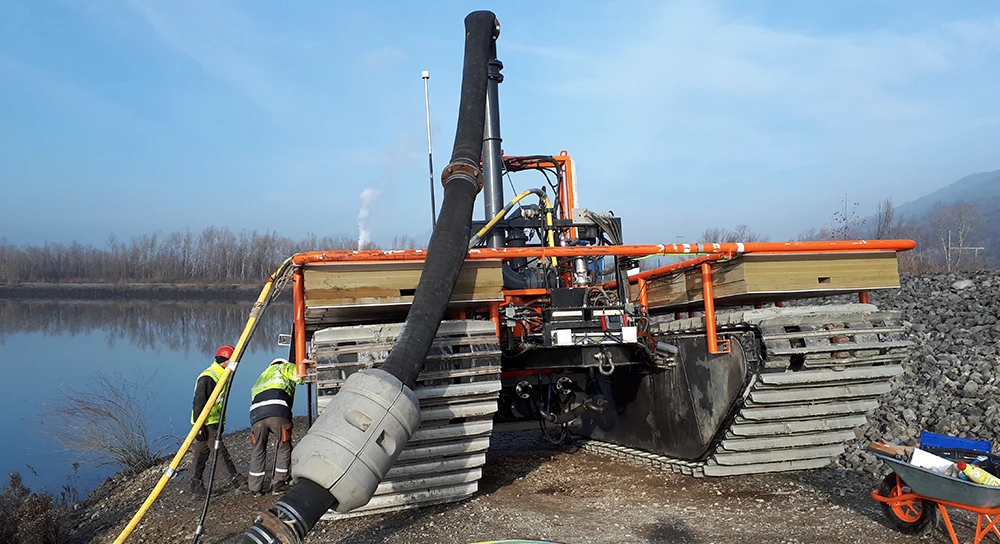Cadarache dam: First tests of NESSIE
The first steps taken by NESSIE, the innovative robot developed by WATERTRACKS in partnership with EDF Hydro, mark a major advance in the field of automated dredging. In October 2019, this 250 kW robot successfully completed its qualification tests in the EDF reservoir at Cadarache. This body of water, set against the impressive backdrop of the Durance-Verdon region, provided an ideal environment for testing the robot’s capabilities on sedimented bottoms.
NESSIE: A New Era for Automated Dredging
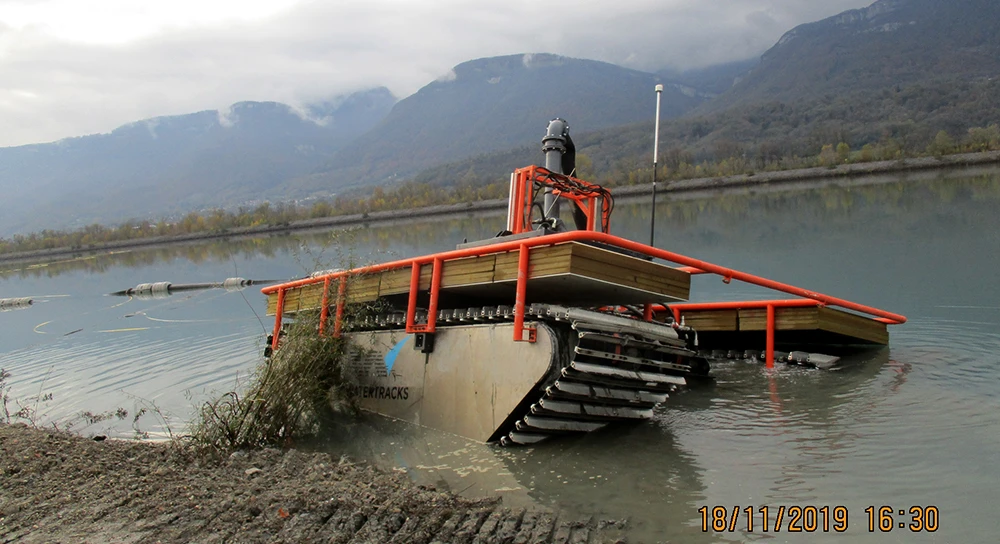
During these tests, NESSIE demonstrated its ability to move smoothly and precisely over sedimented bottoms, while making efficient dredging passes. This test phase, essential for validating the robot’s performance and reliability, confirmed the promise of fully automated dredging operations. The WATERTRACKS and EDF Hydro teams are now carrying out intensive dredging trials, with the aim of preparing the first industrial dredging operations by spring 2025.
NESSIE’s success is based on a combination of advanced technologies: its autonomous navigation system, its ability to adapt to difficult underwater conditions, and its powerful 250 kW motorization. Thanks to these features, NESSIE is capable of clearing accumulated sediments quickly and efficiently, a major challenge for the maintenance of hydroelectric infrastructures and the management of water resources.
A strategic environmental and energy context
The tests took place in the EDF reservoir at Cadarache, a strategic site in the Durance-Verdon hydroelectric network. This vast facility, covering more than 51 hectares, plays an essential role in green electricity generation, agricultural irrigation, drinking water supply and flood control in the region. It is therefore crucial to maintain an optimal level of maintenance of this water body, not only to ensure the continuity of water services, but also to protect the local ecosystem.
The Cadarache site is located in a natural zone of ecological, faunistic and floristic interest (ZNIEFF), classified for its exceptional biodiversity. The use of non-invasive technologies such as NESSIE enables us to combine efficiency and respect for the environment, by limiting the impact on aquatic habitats and protected species.
A Promising Future for Automated Dredging
Tests are currently underway to fine-tune NESSIE’s capabilities for continuous, fully automated dredging operations. The ultimate aim is to enable operators to monitor and control these sites remotely, without direct human intervention, while guaranteeing regular, optimized maintenance of hydraulic structures.
These first trials of the NESSIE robot represent a key step in the development of technological tools that will transform the way in which retention basins and hydraulic infrastructures are managed worldwide. With its promising performance and potential for large-scale application, NESSIE could well become a key player in the sustainable management of water resources.
